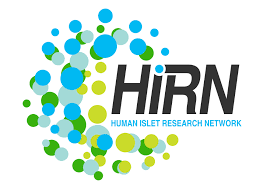Leaving Community
Are you sure you want to leave this community? Leaving the community will revoke any permissions you have been granted in this community.
dkNET community events and announcements in August, 2020
Dear dkNET Community,
dkNET provides updates on activities of interest to the NIDDK-supported community. You could keep up to date on these activities through our Twitter feed @dkNET_info, through our Community Calendar, or through dkNET e-mail list. If you have an event or funding opportunities you'd like to advertise, please contact us info_at_dknet.org.
dkNET News
- Congratulations to Dr. Chun-Nan Hsu and co-authors from the dkNET team, RRID team, FAIR Data Informatics Lab at University of California San Diego, and collaborators at National Central University in Taiwan on publishing a new preprint "Antibody Watch: Text Mining Antibody Specificity from the Literature"! The preprint can be downloaded at https://arxiv.org/abs/2008.01937
- dkNET Webinar series: The slides of the dkNET's webinar "Live Demo of the dkNET Signaling Pathways Project", presented by Dr. Neil McKenna, can be downloaded at dkNET SlideShare. Hypothesis generation using SPP coronavirus infection consensomes tutorial is also available at https://youtu.be/jqyvHsORCZ0.
- Signaling Pathways Project (SPP) team has updated the preprint (4th version) "A transcriptional regulatory atlas of coronavirus infection of human cells" on bioRXiv. SPP has also collaborated with the NDEx project to make the coronavirus transcriptional networks available as Cytoscape-style networks.
- Congratulations to dkNET principal investigator Dr. Maryann Martone and all the authors on publishing a new National Academy of Sciences report " Life Cycle Decisions for Biomedical Data: The Challenge of Forecasting Costs". You can read it online or download the prepublication version now.
- The slides of the Research Data Alliance (RDA) webinar "What do you really know about that antibody? Ask dkNET", presented by Dr. Maryann Martone, are now available at dkNET SlideShare.
- New Resources added to dkNET
- Pancreatlas (RRID:SCR_018567) contains a collection of human pancreas data and images. It is a platform to share data from human pancreas samples. It houses reference datasets from human pancreas samples, achieved through the generosity of organ donors and their families.
- Nanotomy (RRID:SCR_018565) contains large scale electron microscopy datasets for Human Type 1 Diabetes.
- Alberta Diabetes Institute IsletCore database (RRID:SCR_018566) contains a collection of data from all pancreatic islet isolations.
- piNET (RRID:SCR_018693) is a web platform for downstream analysis and visualization of proteomics data. It server that facilitates integrated annotation, analysis, and visualization of quantitative proteomics data, with emphasis on PTM networks and integration with LINCS library of chemical and genetic perturbation signatures in order to provide further mechanistic and functional insights. The primary input for server consists of set of peptides or proteins, optionally with PTM sites, and their corresponding abundance values.
- Signaling Pathways Project (RRID:SCR_018412) is a web multi-omics knowledgebase based upon the public, manually curated transcriptomic and cistromic datasets involving genetic and small molecule manipulations of cellular receptors, enzymes, and transcription factors. It is an integrated omics knowledgebase for mammalian cellular signaling pathways. The web browser interface was designed to accommodate numerous routine data mining strategies. Its datasets are biocurated versions of publically archived datasets and are formatted according to recommendations of the FORCE11 Joint Declaration on Data Citation Principles73, and are made available under Creative Commons CC 3.0 BY license. Original datasets are available.
- METAGENOTE (RRID:SCR_018494) provides a quick and intuitive way to annotate data from genomics studies including microbiome. It is a project to aid researchers in applying standardized metadata describing what, where, how, and when of samples collected in genomics study. It contains collection of METAdata of GEnomics studies on web-based NOTEbook. The metadata is stored in a centralized repository and validated according to guidelines from Genomics Standard Consortium, which are also supported by repositories and large microbiome initiatives such as NCBI, European Bioinformatics Institute (EBI), and Earth Microbiome Project. Upon request from researchers, data will also be submitted for publication via the NCBI Sequence Read Archive (SRA) repository.
Events in August, 2020
Aug. 10, 2020
Webinar Series on Sphingolipid Biology: Sphingolipids in Physiology and Pathology
Title: Molecular phenotyping of CerS1 deficiency in mouse cerebellum
Speaker: Stefanka Spassieva
Abstract: Ceramide synthase 1 (CerS1) is the main neuronal ceramide synthase catalyzing the generation of C18 ceramide. Catalytically inactive mutation of CerS1 results in 50% reduction of brain C18 ceramide and significant increases in sphingoid bases causing Purkinje cell degradation and cerebellar ataxia. Ectopic expression of CerS2 in the neurons of the CerS1 mutant restores sphingoid bases to wild type levels, rescues Purkinje cells from degradation, and eliminates the ataxia phenotype. CerS2 isoform shares the same sphingoid base substrates as CerS1, but catalyzes the production of very long-chain ceramides (C22-C24).
Our recent expression profiles analysis suggest that increased levels of sphingoid bases due to CerS1 deficiency affect the expression of genes critical for the survival and maintenance of cerebellar neurons, such as genes involved in neurogenesis, synaptic functions, and calcium signaling. Proteins with pleckstrin homology or SH3 domains were also affected. In addition, our analyses revealed that CerS1 deficiency in the cerebellum leads to up regulation of the complement system and G-protein coupled receptor signaling. Moreover, our results predict that differences in the sphingolipids’ fatty acyl chain-length produce functionally distinct cerebellar neurons when Cers2 is used to rescue defects caused by CerS1 mutation.
More information: https://www.sphingolipidbiology.com/spassieva
Webinar Series on Sphingolipid Biology: Sphingolipids in Physiology and Pathology
Speaker: Michael Airola
Abstract:Lipins are phosphatidic acid phosphatases that regulate de novo phospholipid synthesis and fat storage as triglycerides, and lipin dysfunction leads to metabolic disorders, including lipodystrophy and rhabdomyolysis. While lipins have been extensively studied at the cellular and physiological level, what has lagged behind is a molecular understanding of their function. The major mystery has been how the two essential regions called the N-Lip and C-Lip, which are located on opposite ends of the lipin protein molecule in humans, come together to form a functional enzyme. The first structure of a lipin (https://www.nature.com/articles/s41467-020-15124-z) revealed a surprising, but clear model for how the N-Lip and C-Lip collaborate to bind membranes and hydrolyze the membrane-lipid phosphatidic acid.
More Information: https://www.sphingolipidbiology.com/airola
Aug. 14, 2020
NIH Webinar: New Tools for Finding Glycans in the PDB & Modeling 3D Structures of Glycans & GlycoProteins
More information: https://meetings.nigms.nih.gov/Home/Index/29099
Aug. 17, 2020
Pre-receipt Webinar for Chronic Kidney Diseases of UnceRtain Etiology (CKDu) in Agricultural Communities (CURE) Research Consortium FOAs
Aug. 24, 2020
HIRN webinar: Development & Use of Adeno-Associated Virus (AAV) Vectors
More information: https://dknet.org/about/dknetnews/2114
Aug. 24, 2020
Webinar Series on Sphingolipid Biology: Sphingolipids in Physiology and Pathology
Abstract: One approach to studying the role of sphingolipids in biological systems is to study inborn errors of metabolism. These are diseases in which the mutated gene encodes most typically an enzyme that is involved either in sphingolipid biosynthesis or catabolism. I will discuss the insights that have been gained from studying these rare disorders and how these diseases are shedding light on pathogenic mechanisms in both rare and common diseases. The information gained has resulted in multiple therapies that are at various stages of the development/approval pathway, that all target different steps in the very complex pathogenic cascades characteristic of these diseases.
Aug. 31-Sep. 02, 2020
[Cancelled] Kern Lipid Conference 2020: Therapeutic Aspects of Adipose Tissue Organ Crosstalk
Location: Vail, CO 81657, USA
More information: https://kernconference.org/
Funding opportunities information and deadlines in August, 2020
IIDP Funding Opportunity Application Due Date: IIDP Islet Award Initiative
More information: https://iidp.coh.org/Investigators/Islet-Award-Initiative
Aug. 04, 2020
NIH Funding Opportunity Application Due Date: Coordinating Unit to Support the Kidney, Urology and Hematology (KUH) Innovative Science Accelerator Program (ISAC-CU) (U24 Clinical Trial Not Allowed)
The purpose of this Funding Opportunity Announcement (FOA) is to establish a Coordinating Unit to support the Kidney, Urology and Hematology (KUH) Innovative Science Accelerator (ISAC-CU) Program. The ISAC-CU will administer a collaborative funding program intended to “seed” high-impact science of interest to the KUH research community.
More information: https://grants.nih.gov/grants/guide/rfa-files/RFA-DK-20-010.html
Aug. 13, 2020
NIH Funding Opportunity Application Due Date: Limited Competition: Continued Follow-up of Subjects and Initiation of a Second Case-control Cohort in The Environmental Determinants of Diabetes in The Young Study (TEDDY) (U01 Clinical Trial Not Allowed)
More information: https://grants.nih.gov/grants/guide/rfa-files/RFA-DK-20-503.html





